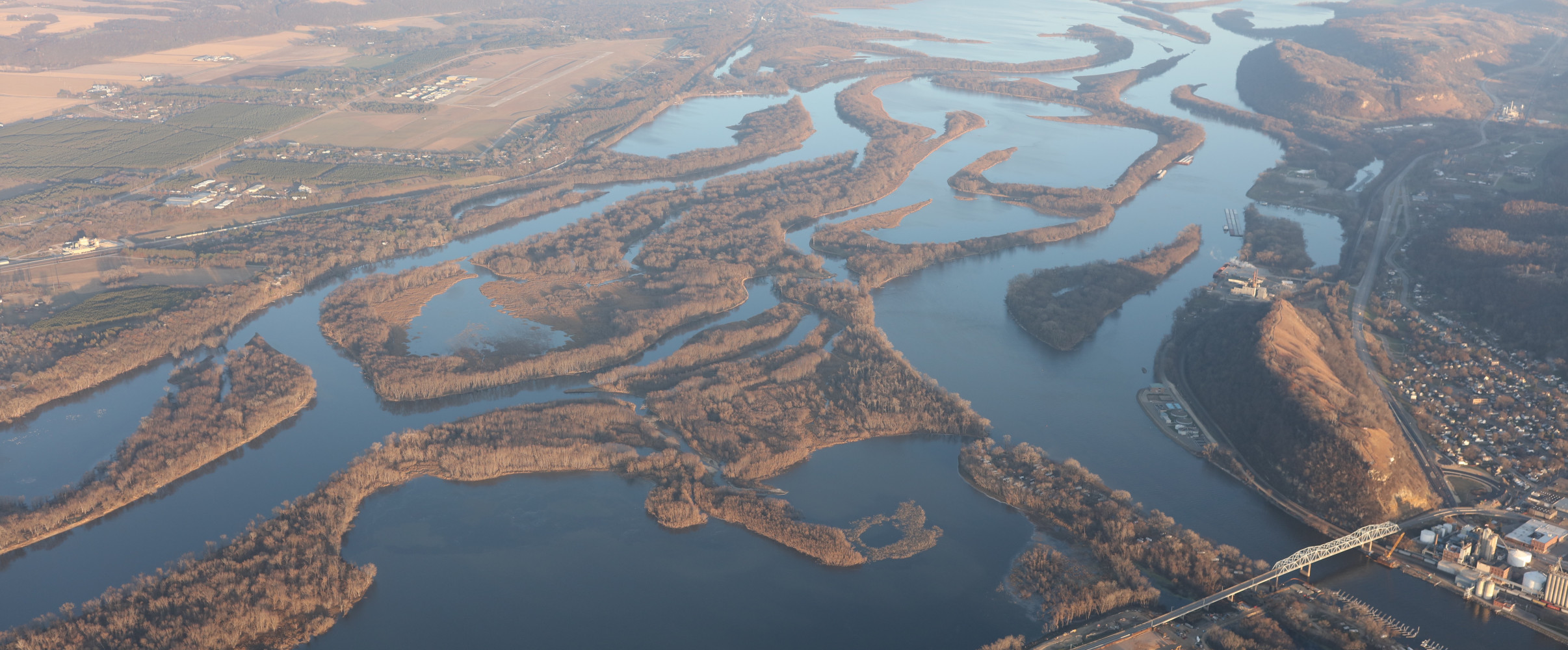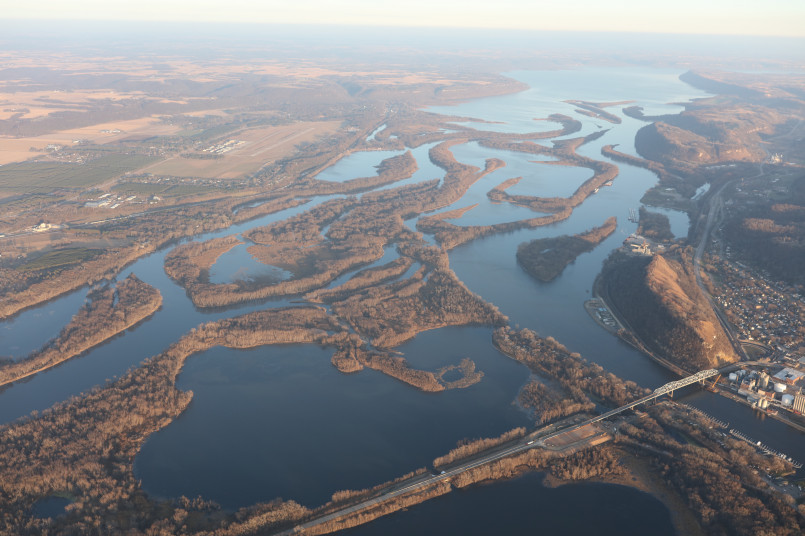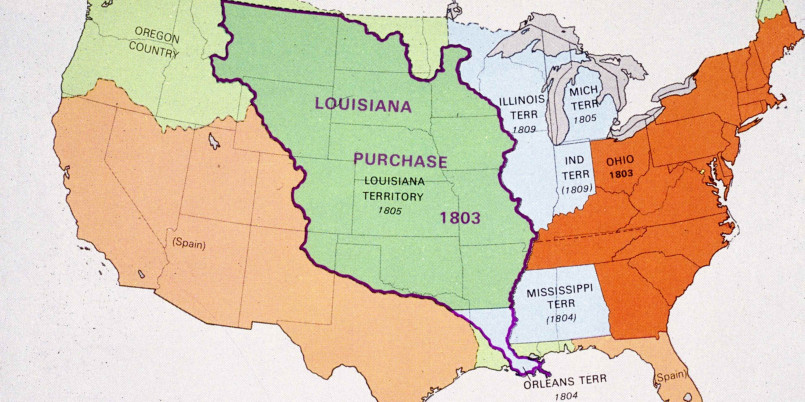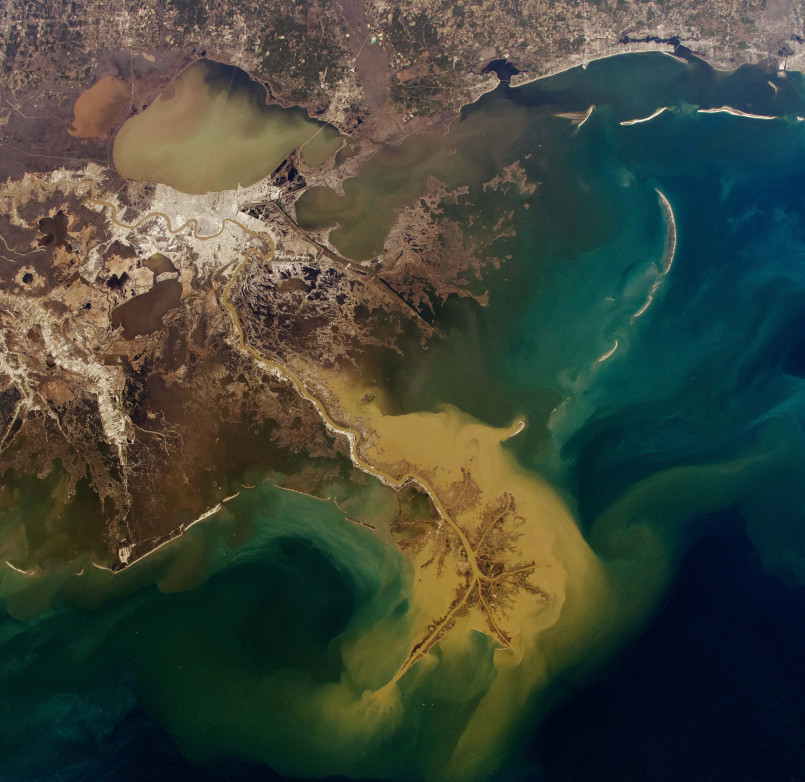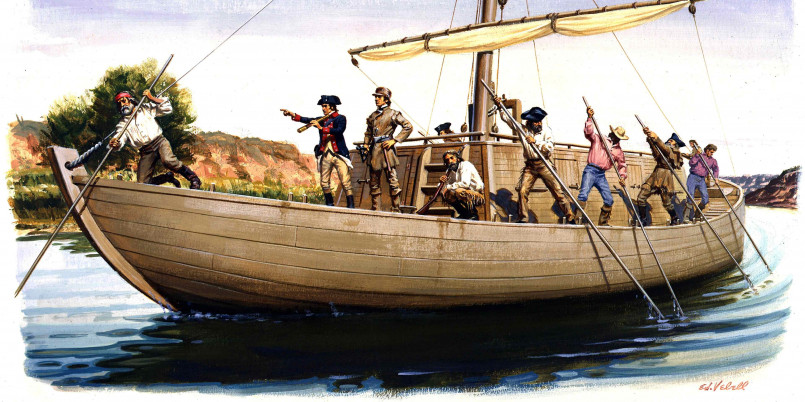The Mississippi River isn't just America's most iconic waterway-it's been the backbone of our economic development for centuries. From opening the continent's interior to trade to powering industrial growth, discover how this 2,300-mile artery transformed the United States into an economic powerhouse.
Stretching more than 2,300 miles from Minnesota to the Gulf of Mexico, the Mississippi River has functioned as America's economic backbone for centuries. Long before railroads and highways crisscrossed the continent, this mighty waterway served as nature's perfect transportation corridor, allowing goods, people, and ideas to flow through the heart of North America. The story of the Mississippi is, in many ways, the story of America's economic evolution itself.
From Native American trade routes to today's massive barge traffic carrying billions of dollars in goods, the river has continuously adapted to changing economic needs while remaining central to American prosperity. Let's explore how this magnificent waterway built, shaped, and continues to influence the American economy.
America's First Commercial Superhighway
Before the era of trains and automobiles, the Mississippi River and its tributaries provided the most efficient means of transportation through the American interior. Early French and Spanish explorers quickly recognized the river's strategic economic potential, establishing trading posts that would eventually grow into major cities like St. Louis, Memphis, and New Orleans.
In the late 1700s and early 1800s, flatboats and keelboats carried agricultural products downriver from frontier settlements to New Orleans. This one-way journey was arduous-crews would typically break up their boats for lumber upon arrival and return north by foot or horseback. Despite these challenges, the river offered the only viable method for transporting bulk goods from the continental interior to international markets.
The 1803 Louisiana Purchase, securing American control of the entire Mississippi, ranks among the nation's most economically significant events. President Jefferson understood that whoever controlled this waterway controlled the economic destiny of North America.
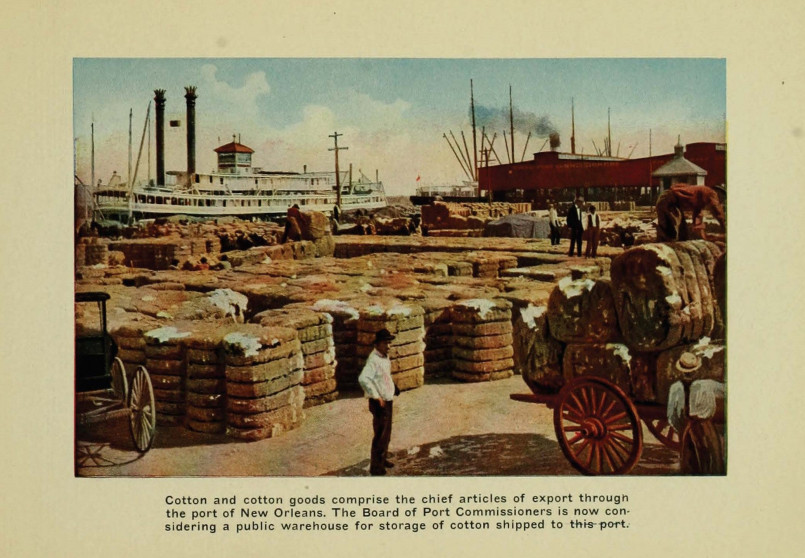
Cotton Kingdom and Plantation Economy
By the early 19th century, the Mississippi River valley became the center of America's cotton economy. Rich alluvial soils in the river's floodplain provided ideal conditions for cotton cultivation, while the river offered an efficient transportation route to textile mills in the Northeast and Europe.
This agricultural boom created enormous wealth but was built on the brutal institution of slavery. Plantations along the river became engines of economic production, with cotton exports representing the largest segment of American foreign trade by the 1840s. New Orleans emerged as one of the nation's busiest ports, handling shipments of cotton, sugar, and other commodities destined for global markets.
The riverboat economy supported an entire ecosystem of related businesses-from warehouses and insurance companies to financial institutions that developed sophisticated credit systems for financing agricultural production and commerce.
Steamboat Revolution
The introduction of steamboat technology in the early 1800s revolutionized river commerce. Unlike earlier vessels that could only travel downriver efficiently, steamboats could navigate against the current, transforming the Mississippi into a two-way commercial highway.
By the 1850s, over 1,000 steamboats plied the Mississippi and its tributaries, dramatically reducing transportation costs and time. What once took months could now be accomplished in days. This technological revolution accelerated economic development throughout the Mississippi basin, connecting previously isolated regions to national and international markets.
Steamboats became symbols of American ingenuity and prosperity. They transported not just agricultural products but also manufactured goods, immigrants, and the latest ideas and fashions from the East Coast to frontier settlements. Towns along the river competed fiercely to become steamboat hubs, knowing their economic futures depended on river commerce.

Agricultural Heartland
The Mississippi River basin encompasses some of North America's most fertile farmland. The river and its tributaries drain more than 41% of the continental United States, including the incredibly productive Corn Belt. This agricultural productivity transformed America into the world's breadbasket.
Annual spring flooding historically deposited nutrient-rich silt across the floodplain, creating exceptionally fertile soils. While modern flood control systems have tamed these natural cycles, the legacy of this fertility continues to make the region an agricultural powerhouse.
Today, farms in the Mississippi watershed produce more than 92% of the nation's agricultural exports. Corn, soybeans, wheat, and livestock raised in this region feed not just America but significant portions of the world. The river provides both the water resources needed for cultivation and the transportation infrastructure to move these commodities efficiently to global markets.
Civil War and Strategic Importance
The Mississippi's economic significance was powerfully demonstrated during the Civil War, when control of the river became a central military objective. Abraham Lincoln famously noted: "The Mississippi is the backbone of the Rebellion; it is the key to the whole situation."
The Union's Anaconda Plan aimed to split the Confederacy by seizing the entire river, cutting off vital supply lines and preventing cotton exports that funded the Southern war effort. The captures of New Orleans, Vicksburg, and other river cities proved decisive turning points in the conflict.
After the war, river commerce rebounded quickly, playing a crucial role in Reconstruction and industrial development. The economic patterns established along the river-with northern manufacturing and southern agriculture-shaped regional development for generations to come.
Industrial Corridor
By the late 19th century, the Mississippi River corridor began transforming from a primarily agricultural economy to an industrial powerhouse. Cities along the river leveraged their transportation advantages and access to raw materials to develop manufacturing centers.
St. Louis, Minneapolis, and other river cities became hubs for flour milling, meat packing, and lumber processing. The river provided not just transportation but also water for industrial processes and, eventually, hydroelectric power.
The discovery of massive coal and iron ore deposits in regions accessible via Mississippi tributaries fueled industrial growth. Steel mills, chemical plants, and other heavy industries clustered along the river's banks, drawn by the combination of abundant raw materials, energy resources, and efficient transportation options.
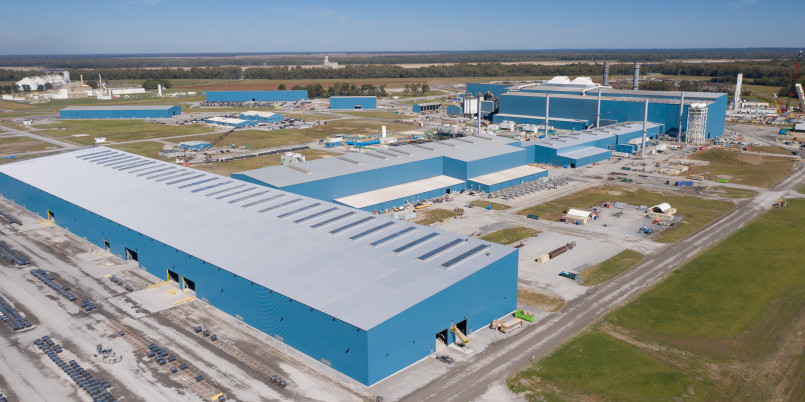
Modern Economic Impact
Today, the Mississippi River remains an economic juggernaut. The river system moves more than 500 million tons of cargo annually, worth over $130 billion. A single standard river barge can carry the equivalent of 70 trucks, making river transport both economically efficient and environmentally friendly.
The Mississippi still serves as a critical export corridor for American agricultural products. Approximately 60% of all U.S. grain exports travel down the river to the Port of South Louisiana and other Gulf Coast facilities before reaching international markets.
Beyond shipping, the river supports a diverse economic ecosystem:
- Tourism and recreation generate billions in revenue for river communities
- Hydroelectric facilities produce renewable energy
- Water-intensive industries rely on the river's abundant supply
- Commercial fishing and aquaculture operations harvest the river's resources
The Mississippi River's economic impact extends far beyond its banks. Thirty-one states and two Canadian provinces fall within its watershed, meaning that activities throughout this vast region affect-and are affected by-the river's health and navigability. Economists estimate that the Mississippi River basin supports more than $400 billion in annual economic activity and 1.3 million jobs directly connected to the river system.
As climate change presents new challenges, from increased flooding to drought conditions that affect navigation, the economic future of the Mississippi will depend on sustainable management practices that balance commercial needs with environmental protection. The river that built the American economy will continue to play a vital role in the nation's prosperity for generations to come.
Frequently Asked Questions About How the Mississippi River Shaped America: 7 Ways It Built Our Economy
Why was the Mississippi River so important for early American economic development?
Before railroads and highways, the Mississippi provided the only efficient transportation route connecting the American interior to international markets. It allowed agricultural products from frontier settlements to reach New Orleans for export, enabled two-way trade after steamboats were introduced, and determined where major cities would develop. The river essentially functioned as America's first commercial superhighway, reducing transportation costs dramatically and opening vast regions for economic development.
How does the Mississippi River impact modern agriculture?
The Mississippi Basin contains America's most productive agricultural regions, with its watershed covering 41% of the continental U.S. Farms in this region produce 92% of the nation's agricultural exports. The river provides irrigation water, fertile soil from historical flooding, and most importantly, an efficient transportation network that moves grain and other products to global markets at a fraction of the cost of rail or truck transport. About 60% of all U.S. grain exports travel down the Mississippi to Gulf ports.
What economic advantages do cities located on the Mississippi River have?
Cities on the Mississippi enjoy significant economic advantages: access to affordable bulk transportation for imports and exports, abundant water supply for industrial and municipal use, tourism revenue from river cruises and recreational activities, and strategic positioning within America's largest watershed. These cities have historically developed specialized industries that leverage the river, from food processing in Minneapolis to chemical manufacturing around Baton Rouge and massive port operations in New Orleans.
How does the Mississippi River transportation system compare to other shipping methods?
River transportation on the Mississippi is remarkably efficient compared to alternatives. A single standard barge can carry the equivalent of 70 semi-trucks or 16 railroad cars. A typical 15-barge tow moves the equivalent of 1,050 trucks. This translates to lower shipping costs (roughly 30-45% cheaper than rail and 70-85% cheaper than trucking) and reduced environmental impact with lower carbon emissions per ton-mile. The river system is especially efficient for bulk commodities like grain, coal, petroleum, and construction materials.
What challenges does the Mississippi River economy face in the 21st century?
The Mississippi faces significant challenges including aging infrastructure (locks and dams built in the 1930s), increased flooding and drought cycles due to climate change, water quality issues from agricultural runoff, competition from modernized ports and shipping routes, and balancing economic use with environmental protection. Maintaining navigation channels requires constant dredging, while flood control systems need upgrading to handle more extreme weather events. Addressing these challenges requires massive investment and coordination across multiple states.
